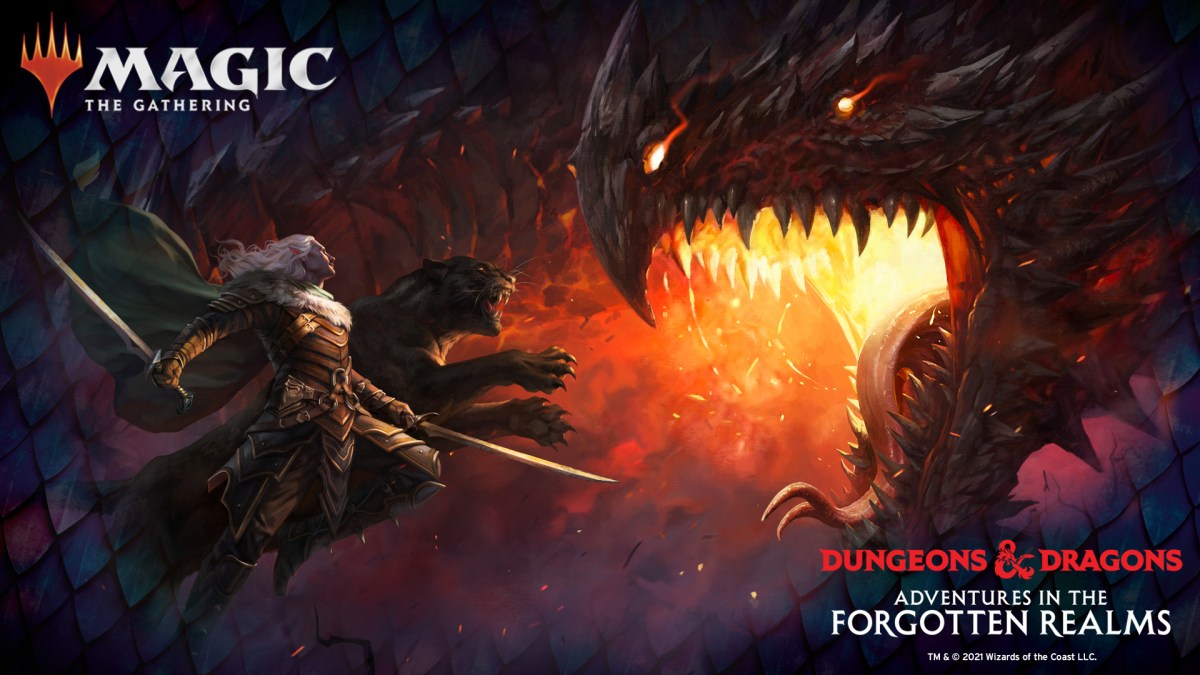How Adventures in the Forgotten Realms puts Dungeons & Dragons Flavor in Magic: The Gathering
From spell names to art variants, we walk you through the ways AFR makes a game of Magic feel like a D&D campaign.

This article is presented by Wizards of the Coast.
Magic: The Gathering’s new Dungeons & Dragons crossover set, Adventures in the Forgotten Realms, is finally in the wild. AFR promised to be a crossover with MTG in more than just name, but they’re two wildly different games. How could you capture the feel of a D&D campaign in a card game? The answer seems to be in the flavor: it’s not just how you play a game of Magic with AFR cards that captures D&D; it’s in how well the new set captures the vibe of a campaign with art, card names, and the variability it’s introduced to each hand of Magic: The Gathering.
The characters and the gameplay have drawn all the headlines so far. Drizzt Do’Urden, everyone’s favorite elf, or evil dragon goddess Tiamat are huge names, and big, impactful cards making splashes across the wild variety of Magic formats. And the dungeon mechanic — certain cards allow you to venture into one of three dungeons for bonus effects on the game board — is very on point for a crossover between the two games. And they’re a ton of fun to race through after an AFR draft. But they’re just the most obvious way that AFR injected D&D into a game of Magic.
Alternate art cards — cards with different art from the standard version, either completely new pictures or cards without borders that let you see more of the artist’s original composition — are exciting pulls from any pack of Magic cards. One of the things AFR introduced are rulebook style cards. The alternate art on these cards does them up to look like a page from a D&D sourcebook. They’re black and white sketches of the character, with the border and rules text background in a paper-brown that we don’t ever see otherwise on Magic cards, and the character background the color of the card’s rarity.
They look great, and pair really well with the Module lands. Each color has a special land that can be animated for a cost, and each of those special lands (and a couple of others) has an alternate art style that makes it look like a classic D&D adventure module. These combine to make the game board feel like a busy D&D tabletop in the best way possible.
One of the greatest additions is in the flavor text on the spells themselves. Gameplay-wise, while You See A Pair Of Goblins is more flexible, one of its effect is similar to casting Dragon Fodder. But the name makes a world of difference. Playing You See A Pair Of Goblins feels like going on a D&D adventure. It makes the game a bit more immersive. Dragon Fodder feels utilitarian and functional by comparison.
The other beauty of these command cards is their flexibility. Every card utilizing this naming convention – from YSAPOG to Choose Your Weapon or You Hear Something On Watch or the several others – gives the player a choice, just like their DM would in a game of D&D. These modal cards make something as common as countering a spell feel like an encounter in a broad campaign.
Magic: The Gathering has always been full of flavor. Adventures in the Forgotten Realms adds more than its share, and the result is a mash up with Dungeons & Dragons that is way more than the sum of its parts.
